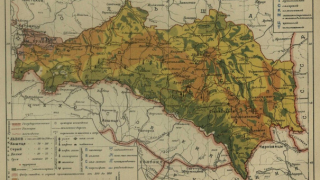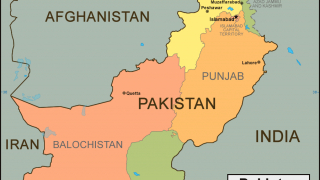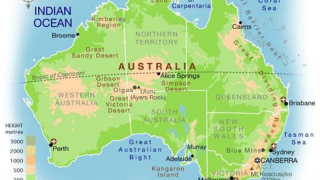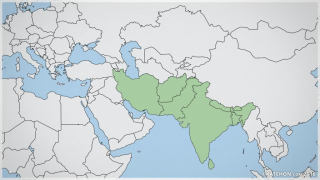2017 Forecast: South Asia
Summary
The joint US-Indian Hybrid War on CPEC will come to define the forthcoming years, but just as equally so might be India’s internal problems brought about by its poorly conceived and sloppily implemented “demonetization”, which has accelerated calls for a federal devolution of the state and might eventually provoke more intense insurgencies. Also, it can’t be forgotten that while all of this is happening, Daesh is silently lying in wait and expanding its covert network of terrorist operatives in neighboring Bangladesh and perhaps even within India itself.
The Hybrid War On CPEC
One of the most under-the-radar developments of 2016 was undoubtedly the commencement of the joint US-Indian Hybrid War on CPEC. The author predicted and monitored the course of these events in the series of articles referenced below, which explain the strategic underpinning behind the project and the multilateral asymmetrical measures designed to subvert it:
* 15 September (2015): Pakistan Is The “Zipper” Of Pan-Eurasian Integration
* 28 April: India’s Politicization Of Terrorism: Masood Azhar And Dolkan Isa
* 4 May: Is India Now A US Ally?
* 7 May: The Threat To Russia And China From India’s New Pro-US Realignment
* 30 August: India’s Geopolitical Hate For Pakistan Is Sabotaging The North-South Corridor
* 27 September: India’s First-Ever Infowar Against Russia Was A Failure
* 29 September: India Just Split Up SAARC And Brought The New Cold War To South Asia
* 6 October: Is Russia’s “Deep State” Divided Over India?
* 7 November: The Death Of SAARC Gave Birth To “Greater South Asia”
Complementary with this, the author also wrote about how Russia should most effectively adapt to India’s pro-American pivot:
* 16 May: The Meaning Of Multipolarity – Methodology And Indicators
* 25 May: India And Multipolarity
* 30 May: The Meaning Of Multipolarity – Managing The “Contested” Countries
* 19 August: Russia’s Diplomatic Balancing Act Is Asia Is To The Benefit Of Its Chinese Ally
* 23 October: Explaining Russia’s S-400 Sale To India
* 1 December: The Secrets Behind Russia’s CPEC Saga
* 19 December: Moscow’s Syrian-Afghan Summits Are Geostrategic Masterstrokes
The general idea is that China needs CPEC in order to securely chart a direct trade route to the Indian Ocean which avoids the bottlenecked Strait of Malacca chokepoint, but that India is furious that the infrastructural megaproject passes through territory which it maximally claims as its own per the Kashmir dispute (in this case, the Pakistani territory of Gilgit-Baltistan). India and the US strategically converge in the grandest way possible when it comes to countering China, hence why both sides entered into an unprecedented military-strategic partnership over the summer through the signing of LEMOA, which crucially allows either country to use all of the other’s military installations on a case-by-case basis. Furthermore, the US just recently designated India as a “Major Defense Partner”, which is essentially a euphemism for being a Major Non-NATO Ally as it allows India the exact same military-technical advantages. Having a shared goal in stopping China and destroying CPEC, the US and India have also teamed up to foment a Baloch insurgency in the southwestern Pakistani province which importantly houses the project’s terminal port of Gwadar.
As predicted in South Asian section of the author’s “Greater Eurasian Scenario” forecasting series, this is expected to set off a chain reaction of proxy wars between India and Pakistan which could realistically also broaden to involve the US and China, all of which would be duking it out via surrogates across the entirety of South Asia. Whether it’s through potential Chinese-Pakistani support for the Sikhs’ separatist homeland of “Khalistan” or Northeastern Indian insurgents and the communist Naxalites of the interior, India’s American-backed Hybrid War on CPEC proxy campaign is expected to boomerang back and lead to a multitude of unanticipated consequences for New Delhi, the most pressing of which might be the country’s eventual devolution.
From “Demonetization” To Devolution
India shocked the world and its own citizenry by suddenly declaring on the day of the American presidential elections (when nobody was paying attention, of course) that it was removing 86% of paper currency from circulation, though this move had a lot more to do with preparing the population for working in foreign “Make In India” industries than fighting “black money”, as was explained in the author’s Katehon analysis about how “The Cash Crisis Is What ‘Make In India’ Is Supposed To Look Like”. Modi’s decision has caused widespread discontent all throughout the country and has already led to disproportionate suffering for the bulk of the impoverished masses. Considering that India is on the brink of starting the “proxy war to end all proxy wars” with Pakistan and China over CPEC (as forecast in the referenced “Greater Eurasian Scenario” article in the prior section), the last thing that it literally needs at this critical moment is an overly agitated citizenry, let alone one which is legitimately upset at the government and not at all under the influence of any foreign actor in this regard.
There’s already long been talk from various political movements in the country about advocating for the devolution of the Republic of India into an outright federation, but these demands just acquired extra weight in the aftermath of the ultra-controversial “demonetization”. Activists in the strategically positioned state of West Bengal are leading this nationwide movement, and there’s a chance that they could gain some practical success in their efforts seeing as how millions of people are upset at the unilateral monetary decisions of the central government. It’s still too early to forecast exactly how far this political trend may go, but it’s important enough to raise awareness about it because it’s indeed emblematic of the direction that some grassroots organizations are moving towards, capitalizing of course on the homegrown anti-government zeitgeist prompted by the disastrous “demonetization”. The central authorities in New Delhi are absolutely opposed to federalization since they fear that it would inevitably result in the country’s territorial fracturing and the eventual loss of the Northeastern States and perhaps other regions as well (Kashmir, “Khalistan”, etc.), so it can be expected that the further that this trend progresses, the more forcefully the government will respond in trying to stop it, which could obviously set into motion a dangerous cycle of civil violence which could inopportunely break out amidst the “proxy war to end all proxy wars’.
Daesh Rising
As India wages its Hybrid War on CPEC and prepares to defend itself from the boomeranged “proxy war to end all proxy war” response from Pakistan and China, it’ll also have to confront a greater challenge than the prospective grassroots-demanded devolution of the unitary state into a federation. Unbeknownst to most casual observers, South Asia is turning into the next global hotspot for international Salafist terrorism, as seen both by Al Qaeda’s ominous 2014 announcement that it’s opening up a regional branch and Daesh’s recent advances in Bangladesh. Although Dhaka officially denies that Daesh has found a space to maneuver within the densely populated Muslim-majority state, the author warned back in 2015 that Bangladesh was turning into Bangla-Daesh. This has yet to materialize to the extent that it prompts a larger crisis, but the seeds are surely there for it to become one if all sides aren’t too careful. As such, the whole of South Asia needs to be alert for the rise of Daesh all throughout the region, as this terrorist group expertly exploits other preexisting conflicts in order to leverage them to its own Salafist advantage (e.g. 2014 “Syraq”).
The consequences of Daesh’s migration to South Asia could be catastrophic for India and contribute to further domestic turmoil in the world’s second-largest country. It’s an interesting set of facts that India has more Muslims than Pakistan and that Bangladesh is the world’s most densely populated country, so these two factors alone heighten the impact that a sweeping wave of Salafist terror could have if calculatingly unleashed in the region. Another thing to keep in mind is that Daesh doesn’t just specialize in suicide bombings but in urban guerrilla warfare and conventional tactics, signifying that it could present an unparalleled pair of asymmetrical and traditional threats to India. Considering how India is already in the throes of widespread domestic discontent due to the “demonetization”, it can ill-afford to deal with these sorts of challenges right now, let alone in the near- to medium-term future if New Delhi irresponsibly unleashes the “proxy war to end all proxy wars” at the US’ chaos-driven behest. In a cynical sense, however, the US might actually welcome this eventuality because it could create a perceived “need” for India to request direct US military assistance via the case-by-case LEMOA basing agreement.
Should this come to pass, then India and the US might even use the threat of a widespread Daesh terrorist insurgency as the cover argument for ‘justifying’ the prolonged deployment of US military assets to the subcontinent, although their real intention would be to “contain” and provoke China.














